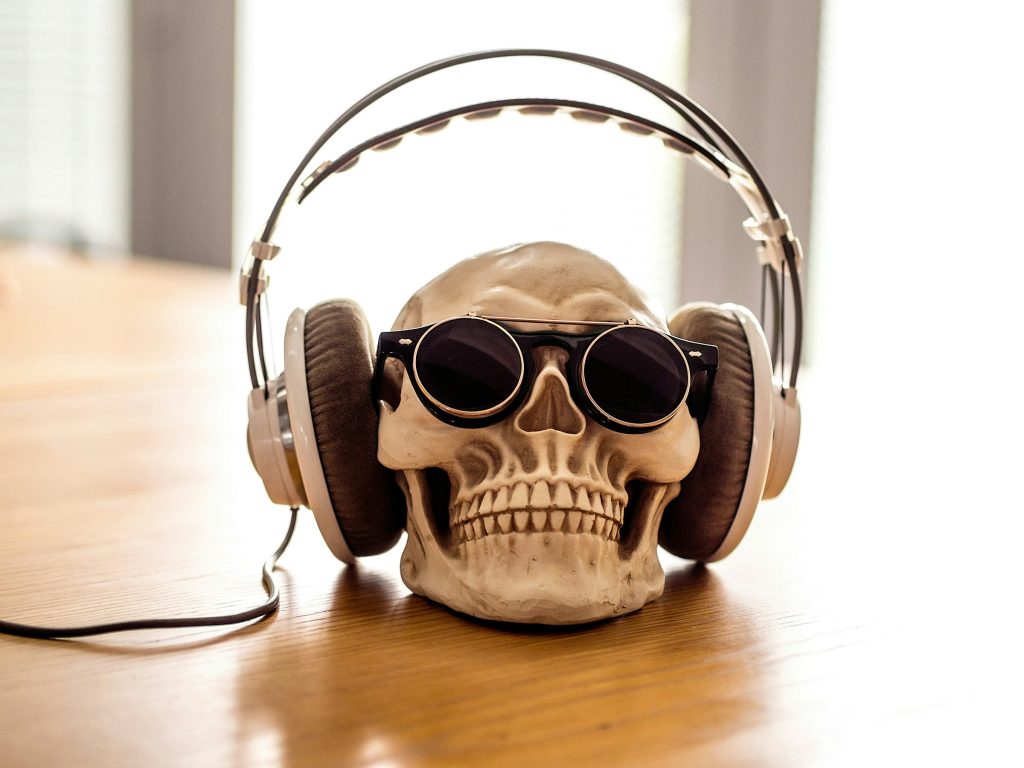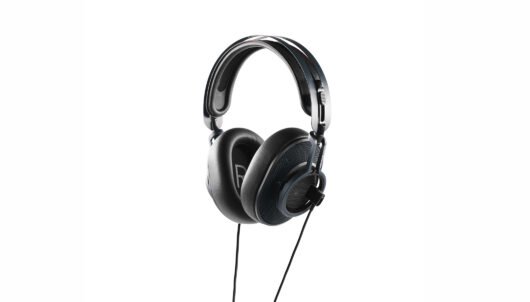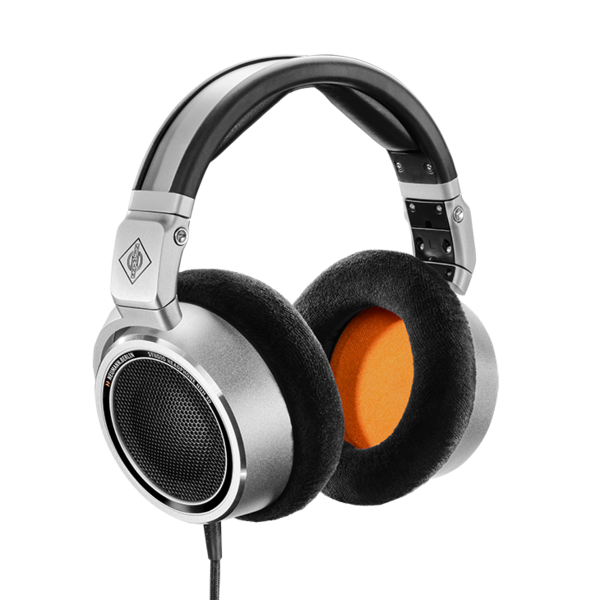
Photo credit: Brett Jordan
Now that recording setups can be totally mobile and remote, headphones have become a much more important tool for indie musicians, producers, and engineers. So we’re going to review some of the best mixing headphones and how to mix on headphones.
Should You Mix On Headphones?
You might’ve heard people say you shouldn’t mix on headphones. And while it’s better to mix on monitors, you can still get a good mix with headphones.
“While it’s certainly tricky to replace loudspeakers completely during the mixing process,” writes Sound On Sound, “it’s quite possible to do about 90 percent of your mixing on headphones.”
Let’s look at the benefits and downsides of mixing on headphones…
The benefits of mixing on headphones:
- Better bass response (if your room is untreated): if your monitors are set up in a room that’s not treated to handle bass, you can get a lot of bass buildup. In this scenario, headphones may give you a more accurate bass response.
- Fewer room reflections: again, if your room is untreated, using monitors to mix may not be ideal. In this case, headphones can help you dial in your mix without the sound of the room.
- Mobile: headphones are really the only way to mix music on the go. You’re not going to bring your monitors with you when you travel, but headphones can easily fit into your backpack.
The downsides of mixing on headphones…
- Higher potential for ear fatigue or hearing loss: when you’re mixing on headphones, the sound is getting pumped directly into your ears. There’s no distance between the sound and your ears like there is with monitors. This can cause ear fatigue and, over time, hearing loss if you’re not careful.
- Gives you a different soundstage: when you listen on monitors, some of the sound from the left monitor hits your right ear but slightly behind the sound from the right monitor. And vice versa. This creates a totally different stereo field than if you were listening on headphones.
So how do you take advantage of the upsides and avoid the downsides? Here are some tips for how to mix music on headphones…
The key is to check your mix on other sources. If you’re going to mix on headphones, make sure you’re also mixing on monitors. If you don’t have monitors, listen on earbuds, your computer speaker, in your car, and wherever else you can. This helps you ensure the mix sounds good regardless of the source.
Opt for open-back headphones if you can. Closed-back headphones are meant to completely cover the ears, making them great for tracking live instruments. But open-back headphones allow bleed from the earcups, preventing ear fatigue. Also, they usually have less of a low-frequency response, potentially giving you a more accurate sound for mixing.
Don’t turn it up too loud. It can be tempting to keep bumping up the volume because louder music sounds better to our brains. But if you turn it up too loud, you can get ear fatigue, a headache, and eventually hearing damage.
Take regular 5-10 minute breaks. This helps protect your ears and also keeps your mind and ears fresh.
Try adjusting your headphones on your head. If you wear your headphones slightly off of your ears (ex. slightly lower and slightly forward on your ears), it can give you a sharper image of the soundscape. And it can help you avoid ear fatigue.
Lastly, use headphone mixing software. Some software can emulate what it would sound like if you were listening through monitors or in a certain room. These programs can help you make sure your mix sounds good regardless of the listening source.
Most headphones have a built-in bump between 40Hz and 500Hz to make up for not “feeling” as much of the bass through headphones. And most headphones also have a gentle roll-off of the higher frequencies, often around 20kHz. So calibrating your headphones is important.
Software To Improve Your Mixing Experience
Let’s take a quick look at some software that will help you get more accurate mixes through your headphones. These programs model the sound of different listening contexts, like professionally tuned speakers, your car, a club, and many others.
Probably the most well-known option is SoundID from Sonarworks. It will “calibrate your headphones and speakers…to trust every mixing decision.” And you can use the free trial before you buy.
You can also try The VSX Headphone Mixing System from Steven Slate. Mike Kosacek, an experienced engineer, writing for Tape Op Magazine, said this program is “a tool that I will 100 percent be using on future mixes to ensure I’m hearing everything I should be hearing!”
There’s also Nx by Waves, which Sound On Sound called “a very cost-effective” plugin that’s “surprisingly three-dimensional.”
10 of the Best High-End Mixing Headphones
If you’ve got a bit of a budget, you may want to spend a little more to get a better pair of headphones for mixing. So below are some of the best high-end headphones, their approximate cost, and reviews that represent the general consensus of users.
AKG K712 PRO (open-back) – $500-700

Photo credit: AKG
Sound On Sound: “…the open‑back design delivers a natural, spacious sound with precise stereo imaging as well as helping to avoid listening fatigue.”
Sweetwater rating: 4.8/5 stars
Top-voted Reddit comment: “…boosted bass that created a muddled midrange and a tepid soundstage…”
Audeze LCD‑X (open-back) – $1,200
Photo credit: AudezeSound On Sound: “…promises to deliver a listening experience comparable to high‑end speaker systems, with a neutral response and low distortion figures helping to combat listening fatigue.”
Amazon rating: 4.2/5 stars
Reddit user review: “The LCD-Xs present instruments and vocals on top and close around of you…”
Audio Technica ATH‑R70x (open-back) – $300
Photo credit: Audio TechnicaSound On Sound: “…promises a natural and spacious sound thanks to acoustically transparent aluminium honeycomb mesh earcup housings, as well as minimal distortion, a balanced tonality with an extended high‑end frequency response and detailed transient reproduction.”
Sweetwater rating: 4.7/5 stars
Top-voted Reddit comment: “It’s a phenomenal headphone, but the thin pads lead me to feel physical discomfort around my ears in a matter of minutes…”
Austrian Audio The Composer (open-back) – $2,700

Photo credit: Austrian Audio
Sound On Sound: “…said to deliver precise reproduction throughout the frequency range along with low THD levels.”
Reddit review: “Detailed but never sibilant or fatiguing, these are truly endgame material for me.”
Avantone Planar (open-back) – $400

Photo credit: Avantone
Sound On Sound: “…offering an accurate sound that couples a detailed high‑frequency response with natural low‑end reproduction and a fast response time.”
Sweetwater rating: 4.1/5 stars
Top-voted Reddit comment: “…the Avantone is a fairly underrated headphone…”
Focal Clear Mg Professional (open-back) – $1,500

Photo credit: Focal
Sound On Sound: “…said to create an extremely precise sound that delivers detail across the full audio spectrum whilst maintaining a flat and natural tonal balance.”
Sweetwater rating: 4.8/5 stars
Reddit review: “…Focal made the new MG model slightly fuller in the bass and almost no peakiness in the treble.”
Neumann NDH 30 (open-back) – $650

Photo credit: Neumann
Sound On Sound: “It shares the same high‑quality spring steel and aluminium construction as the earlier NDH 20, but with an open‑back design that helps to deliver a fast transient response and maintains a natural, transparent sound throughout the entire frequency range.”
Sweetwater rating: 4.8/5 stars
Reddit review: “The tuning is excellent. One of the best I’ve ever heard.”
Sennheiser HD 600 (open-back) – $400
Photo credit: SennheiserSoundGuys: “…one of the most venerated headphones in the audiophile space over the last few decades for good reason: it’s great.”
Sweetwater rating: 4.7/5 stars
Top-voted Reddit comment: “…tried and true. There are fancier (more expensive) models out there with wider soundstages, but they’ve been good enough for tons of engineers since 1997 and that’s good enough for me.”
Shure SRH1840 (open-back) – $600

Photo credit: Amazon
Sound On Sound: “The 1840 offers an extended high‑frequency response, accurate bass reproduction and a wide stereo image…”
Sweetwater rating: 4.7/5 stars
Reddit review: “It’s like musical nirvana. Very clear sounding and great imaging. Bass is tight. Has some nice sparkle and a very large soundstage.”
Sony MDR‑MV1 (open-back) – $400

Photo credit: Guitar Center
Sound On Sound: “…promises unparalleled spatial accuracy for all listening formats thanks to a precision‑tuned open‑back design loaded with drivers that have been optimised to deliver a natural, balanced sound with minimal distortion.”
Sweetwater rating: 5/5 stars (two reviews)
Reddit review: “…I think they are very good but I still don’t trust them enough to mix without also checking the monitors.”
Best Mixing Headphones on a Budget
If you’re like many other indie musicians and you have a smaller budget, there are still really good options for you. Here are a few of the best mixing headphones at a lower pricepoint.
Audio-Technica ATH M50x (closed-back) – $150

Photo credit: Audio-Technica
Tape Op Magazine: “They’re comfortable, I can wear them for extended periods of time and can hear a lot of detail on them.”
Sweetwater rating: 4.7/5 stars
Top-voted Reddit comment: “M50x seems to have fixed some of the tuning problems [present in the M50]…”
Sony MDR-7506 (closed-back) – $100

Photo credit: Sony
New York Times: “…our listening panel of audio experts and musicians chose the MDR-7506 set over nearly 150 headphones in the same price range, as well as dozens that cost over $200.”
Sweetwater rating: 4.5/5 stars
Top-voted Reddit comment: “I bought a pair and they’ve been great. I’m sure there’s benefit in paying more, but these are well balanced and work for me…”
Sennheiser HD 280 PRO (closed-back) – $100

Photo credit: Sennheiser
SoundGuys: “…may be a little lightweight on bass, but if you’re mixing or recording, it’s a solid tool and offers a good value.”
Sweetwater rating: 4.4/5 stars
Top-voted Reddit comment: “I rarely ‘mix’ on them, prefer monitors at lower volumes for most of those hours, but I will pull them out for ‘details’ if I am trying to get an instrument to fit, and I ‘confirm’ a mix towards the end on the cans…”
Author’s note: these are my main headphones. I normally mix on monitors, but I’ve done a lot of mixing on these can, and I always check my mixes on them. They have a relatively flat response, which I prefer for mixing.
Headphones for Mixing FAQs
Open-back headphones vs closed-back headphones…what’s the difference?
Open-back headphones allow air and sound to pass through the ear cups from the back. This means there’s much less low-frequency buildup than closed-back headphones. Closed-back headphones fully cover the ear, making them better at sealing in sound and isolating your ears from outside noise.
What type of headphones are best for mixing?
Open-back headphones are preferred for mixing because they are less likely to have unnecessary bass buildup. Also, because they allow air and noise out of the back, they’re less likely than closed-back headphones to cause ear fatigue.
How do I choose headphones for mixing?
When buying headphones for mixing, opt for open-backed headphones if you can afford them. One of the main things to remember is, you want the flattest possible frequency response. This will let you hear everything in the mix without certain frequencies getting boosted more than others.

